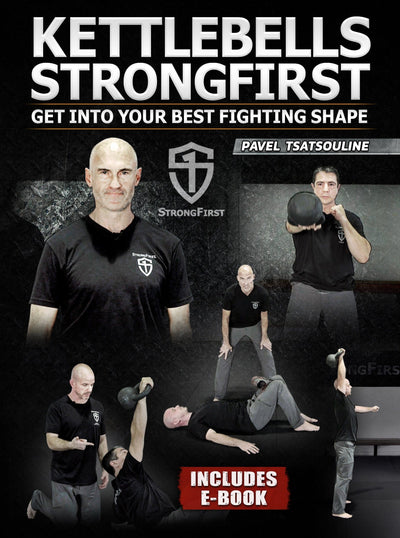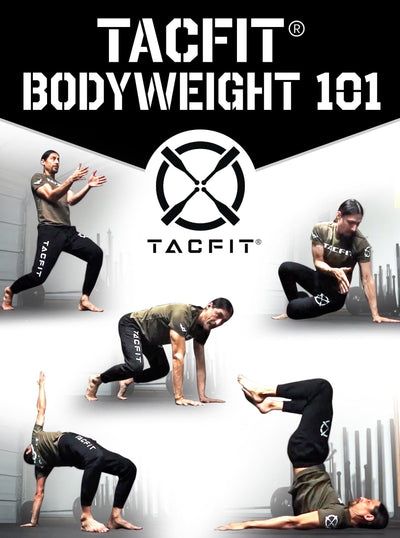Safely Increasing Weight for Optimal Progress
Kettlebells, with their unique design and versatility, have become a popular choice for fitness enthusiasts looking to build strength, endurance, and functional fitness. Whether you're a beginner or a seasoned kettlebell enthusiast, the decision to increase kettlebell weight is a pivotal moment in your training journey. In this article, we'll explore the background of kettlebell training, the different types of kettlebell exercises, and how to safely and effectively increase the weight of your kettlebell to continue progressing in your fitness goals.
What this article covers:
- The Background of Kettlebell Training
- Types of Kettlebell Exercises
- How to Safely Increase Kettlebell Weight
The Background of Kettlebell Training
Kettlebells have a rich history dating back to 18th-century Russia, where they were initially used as counterweights for measuring grains. Over time, they evolved into a versatile tool for strength training, gaining popularity worldwide. Kettlebell training combines elements of strength, cardio, and flexibility, making it an efficient and effective way to improve overall fitness.
If you are looking for how to use kettlebells, finding a bodyweight and kettlebell workouts, crossfit rx kettlebell weight, or how to increase kettlebell weight, we have you covered!
Types of Kettlebell Exercises
Kettlebell Swings
Muscle Groups Targeted: Kettlebell swings are primarily a posterior chain exercise, emphasizing the glutes, hamstrings, and lower back. They also engage the shoulders, core, and grip strength.
Technique: Begin with the kettlebell on the ground in front of you. Stand with your feet shoulder-width apart and hinge at your hips to grab the kettlebell handle. Swing it between your legs with a slight bend in the knees, then explosively drive your hips forward to swing the kettlebell up to chest height. The momentum should come from your hips, not your arms. Maintain a neutral spine throughout the movement.
Turkish Get-Ups
Muscle Groups Targeted: Turkish get-ups are a full-body exercise that strengthens stability and mobility. They work the shoulders, core, and lower body.
Technique: Start by lying on your back with the kettlebell held straight above your chest. Follow a sequence of movements, transitioning from lying down to standing while keeping the kettlebell balanced. This exercise demands precise control and coordination, making it an excellent choice for overall strength and mobility.
Goblet Squats
Muscle Groups Targeted: Goblet squats primarily target the legs, especially the quadriceps, hamstrings, and glutes. Holding the kettlebell close to your chest engages the core and upper body.
Technique: Hold the kettlebell close to your chest with both hands. Stand with your feet shoulder-width apart and perform squats. The kettlebell counterbalances your weight, helping you maintain an upright posture. Ensure your knees track over your toes and your back remains straight throughout the movement.
Clean and Press
Muscle Groups Targeted: Clean and press combines two movements. The clean primarily targets the hips and upper back, while the press focuses on the shoulders, triceps, and core.
Technique: Start with the kettlebell on the ground. Bend at the hips and knees to grab the kettlebell, then explosively lift it to your chest. From there, press it overhead with a straight arm. Lower it back to your chest, then down to the ground. This exercise enhances both strength and power.
Kettlebell Snatches
Muscle Groups Targeted: Snatches are a dynamic exercise that engages the hips, shoulders, and arms. They also improve cardiovascular endurance.
Technique: Begin with the kettlebell on the ground. Swing it between your legs and use the momentum to lift it overhead in a single fluid motion. The key is to guide the kettlebell close to your body, preventing it from swinging away. It's essential to maintain proper shoulder stability throughout the movement.
These kettlebell exercises, when performed with proper form and technique, provide a comprehensive full-body workout. They can be incorporated into various fitness routines, from building strength and power to improving mobility and cardiovascular conditioning. As you increase the weight of your kettlebell, ensure that you maintain proper form to maximize the benefits and reduce the risk of injury.
How to Safely Increase Kettlebell Weight
Increasing the weight of your kettlebell should be done gradually to prevent injury and ensure consistent progress. Here's a step-by-step guide on how to do it safely:
Master the Basics: Before moving to a heavier kettlebell, make sure you have a solid foundation in fundamental exercises like swings, squats, and Turkish get-ups. This ensures proper technique and reduces the risk of injury.
Understand the Increment: Typically, kettlebells increase in weight in increments of 4 kg (about 9 lbs). Make sure you can comfortably perform your current exercises with the current kettlebell before progressing to the next weight.
Test Your Limits: Before committing to a heavier kettlebell, test it with a few reps to ensure you can control the weight and maintain proper form. If it feels too challenging, consider spending more time with your current weight.
Gradual Transition: Once you decide to increase the weight, incorporate the new kettlebell gradually into your routine. You might start with a few sets using the new weight while keeping the majority of your workout with the old weight.
Listen to Your Body: Pay attention to any signs of strain or discomfort. It's crucial to prioritize safety over ego. If you experience pain or find yourself compromising your form, return to the previous weight and work on your technique.
Progressive Overload: As your strength and proficiency improve with the new weight, increase the volume and intensity of your workouts. You can add more sets, repetitions, or explore more advanced exercises.
Recovery Matters: Adequate rest and recovery are essential. Muscles need time to adapt to the new load. Ensure you get enough sleep and incorporate rest days into your routine.
Kettlebell training is a rewarding journey that can significantly enhance your overall fitness. When you decide to increase kettlebell weight, approach it with a mindful and progressive mindset. Mastering the fundamentals, listening to your body, and incorporating gradual changes are keys to a successful transition. With patience and dedication, you'll continue to make steady progress and achieve your fitness goals with kettlebell training.
Did you find the blog helpful? If so, consider checking out other guides:
- Kettlebell Swing Form
- How to Do Kettlebell Swings
- Alternatives to Kettlebell Swings
- 100 Kettlebell Swings a Day
- Kettlebell Swings with a Dumbbell
- 10,000 Kettlebell Swing Challenge
- How Many Kettlebell Swings
- 300 Kettlebell Swings a Day
- 50 Kettlebell Swings a Day
- 200 Kettlebell Swings a Day
- Double Kettlebell Swing
- Banded Kettlebell Swings
- The Kettlebell Side Swing
- Heavy Kettlebell Swings
- Kettlebell Swing Variations





